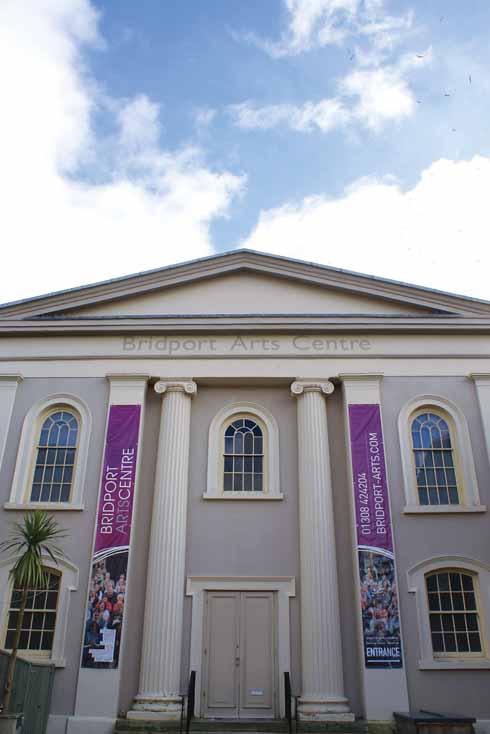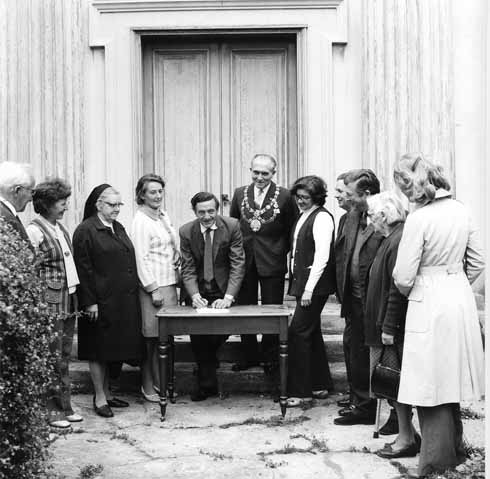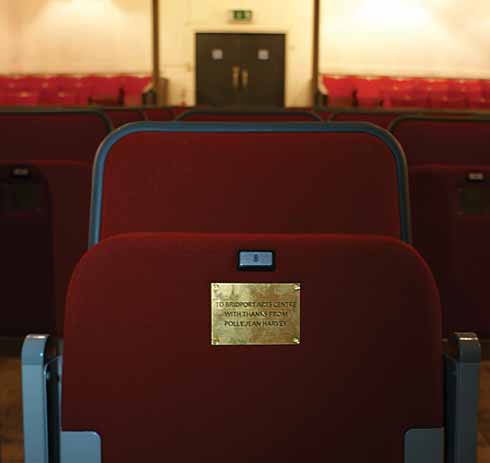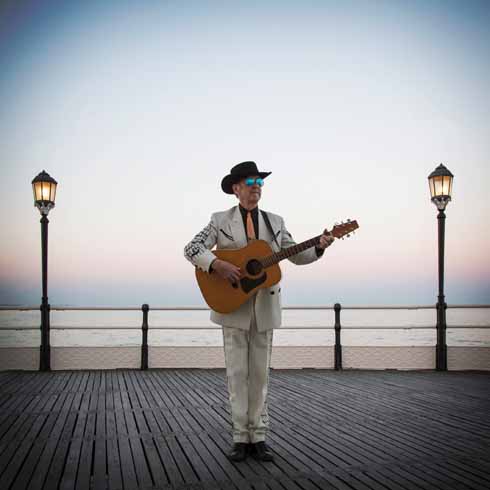Ruby in the west – Bridport Arts Centre
Published in May ’14
For, in national terms, a small town, Bridport punches well above its weight in terms of the facilities it has, the events it puts on and its contribution to the wider artistic world. Polly Gifford, Director of the Bridport Arts Centre (BAC), tries to put this activity in context: ‘The development of the arts centre mirrors, and is mirrored by, the development of the arts in Bridport. When I came here 3½ years ago I thought “Hey, what an arty place”, but when I talked to people who’d been here a lot longer than me, they say it wasn’t always so.’
‘At the start of the arts centre – founded by a group of determined, passionate and very energetic arts lovers – they did everything themselves, and with very little money,’ Polly explains. ‘That’s how it started, then the organisation gradually professionalised and consolidated., If you look back over the last forty years, and if you look at the arts centre and at the town now, there is this substantial, established arts offering; I think the two things have probably developed in parallel.’
So what is the Bridport Arts Centre? It is a building that used to be a church, it is one of a number of cultural institutions in the town but it is quite hard to pin down what it does – not least because it does an awful lot. ‘The only way to describe the BAC’s programme is by its variety,’ says Polly. ‘In a larger region, where there is more choice, you can specialise, but because we work with such a diverse audience, and need to meet the needs of that audience, we have to present a programme that is itself diverse, but the one thing that holds it all together is quality.’
This is, she admits not a new thing: ‘It’s that commitment to quality that was the great legacy I inherited when I came here. There is a trust that has built up over the last 40 years that whatever BAC puts on, it will be a good example of whatever it is, so people will come and see something by a new theatre company, or by a writer that they’ve never heard of, because they trust us to pick something good. Even if they don’t like it,’ she says admiringly of the BAC’s public, ‘they’ll still acknowledge that it is good. That trust and quality allows us to provide a varied programme and not to just put on things which we know people will like because everyone’s heard of them. I’ve got nothing against things being popular,’ Polly adds quickly, ‘but I’ve seen it personally so many times when people here have said “Never heard of them, but the last thing I saw was good, so I thought I’d come along”.’
The knowledge that something will attract an audience has other benefits than a nice, warm feeling for the BAC hierarchy. As Polly puts it, ‘It’s like the way we work with artists; we are a small venue, but we still manage to get a lot of good artists who wouldn’t necessarily play a small [200-seater] venue, because we look after people really well. It’s not just audiences who pick up the level of care and attention to detail that goes into organising events, it’s the artists as well. If a well-known artist has been on the road playing large gigs and then they come here, they know they’re going to have a really nice time and an appreciative, intelligent and interested audience. If you know that, you will come and play a 200-seater venue.’
An ever-increasing element of cooperation with other organisations is also a great bonus. The film festival (From Page to Screen) on which BAC works closely with the Electric Palace is the only one of its kind in the UK and was inspired by the Bridport Prize. ‘We also work closely with Niki McCretton (at the Lyric theatre) – she runs our youth theatre – and we all feel very strongly that the health of one is the health of all.’
Where once, perhaps, arts venues were more interested in snaffling a marquee artist or all trying to get hold of the same small pots of money, the arts ‘industry’ has started to take a ‘stronger together’ approach. ‘What’s happened in the last few years is that the collaboration that was quite new across Dorset has really started to take off, so for example we work closely with Dorchester Arts and the Marine (Lyme Regis theatre) on joint programming. Although it is still in some contracts for artists that they “cannot perform within 20 miles within a certain time”, in rural Dorset, that’s simply not needed. Collaborating means that we can get bigger acts that wouldn’t come otherwise for a single gig, but will do if we can offer them three nights. We’ve found it makes no difference to the audience sizes; people will come to their local venue if they can, but if they can’t they can go to a nearby one.’
The nature of collaboration has expanded of late. ‘We now work across the whole of Dorset (including Poole and Bournemouth),’ Polly explains, ‘through an organisation called the Dorset Arts Trust – a network of 80-90 organisations that was coordinated by the County Council. We collaborate according to different themes: young people, the environment, arts and health, arts and tourism and economy, so we’ve got a really powerful collective voice. We’re an Arts Council example project of how collaboration can work, particularly in a rural area.’
Because there is no flagship city – with a great big venue and a great big budget – in Dorset, what Polly has found is that by collaborating, everyone can still do their own thing, but by coming together around certain common interests, they can raise a lot of money by applying for funding for collaborative projects. ‘We’ve got money we could never have got on our own,’ she says, ‘but it’s also about being able to manage projects which we could never have managed alone as well.

Polly Gifford between the posters commissioned to accompany the exhibition running alongside the 'Page to Screen' festival
Funding is always an issue in the arts and this is probably exemplified by fine-art gallery finding. For a county that has probably more artists than anywhere else in the country, Dorset has two only galleries in receipt of government funding: BAC and Wimborne’s Walford Mill Crafts (which has a very particular brief on craft), so BAC has the only funded fine-art gallery in Dorset – a state of affairs described by Polly as ‘shocking’.
Whilst there is perhaps predictable disappointment with national funding, Polly is quick to praise local authorities. ‘West Dorset DC is hugely supportive, as is the Town Council. The fact that both the Town and District council recognise the importance of their cultural offer is really great – a lot of local authorities don’t. Localism and community cohesion and all that may sound a little bit corny, but it really does make a difference in small communities like this.
A great example of this was the Bridport FM community radio project. ‘It started out,’ Polly recalls, ‘as one part of a much larger outreach project and just really captured something in the town. We engaged a number of people in presenting, but also in developing and researching programmes and really being able to follow up things that they’re interested in and it ended up being the largest part of the project.’
‘It’s funny,’ Polly continues. ‘We started off thinking it was this big [she holds her finger and thumb slightly apart] and then we were suddenly pulling in all sorts of people who hadn’t got involved with the arts centre before. We did an FM broadcast, but we also did it online and
we had people listening online from about twenty different countries.
The thing for which the BAC is best known had equally humble origins but has a profound and ever-increasing contribution: The Bridport Prize. ‘It started with [BAC co-founder] Peggy Chapman Andrews thinking “I could bring a few pounds into the arts centre by starting a local literary prize”,’ says Polly with a smile. ‘Over the years it’s grown and grown and, with the advent of online entries, it’s really grown. I don’t think Peggy could possibly have imagined how big it would get. Because now a lot of it is online, the constituency of the Bridport Prize is the English-speaking world – we get entries from 80 countries – and it raises money for the arts centre, and thank God that it does, because we simply wouldn’t be what we are without it. It’s helped us to be more ambitious because we’ve got this stream of funding for which we are not beholden to any council or funding body and without it [the BAC] would look very different.’
What the BAC is – as well as a café/comedy venue/life-drawing studio, a gallery and a 200-seater theatre/concert venue, is much more than the building and spaces alone. It is two full-time staff (Polly Gifford and Dee, the General Manager), seven part-time staff, a lot of casual staff (the BAC tries to give a lot of opportunities to young people in the box office or with bar work) and, probably most importantly of all, about 200 active volunteers. Oh, and an incredibly supportive local population. ◗
❱ www.bridport-arts.com

The main auditorium at the Bridport Arts Centre; it may have a smaller capacity than venues in cities, but its audience makes up for in enthusiasm what it lacks in numbers






